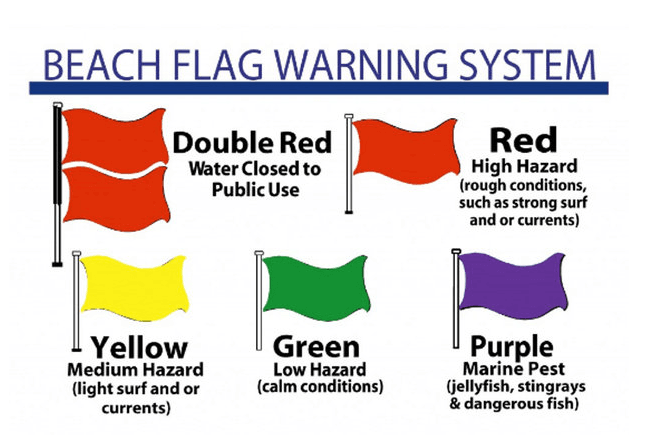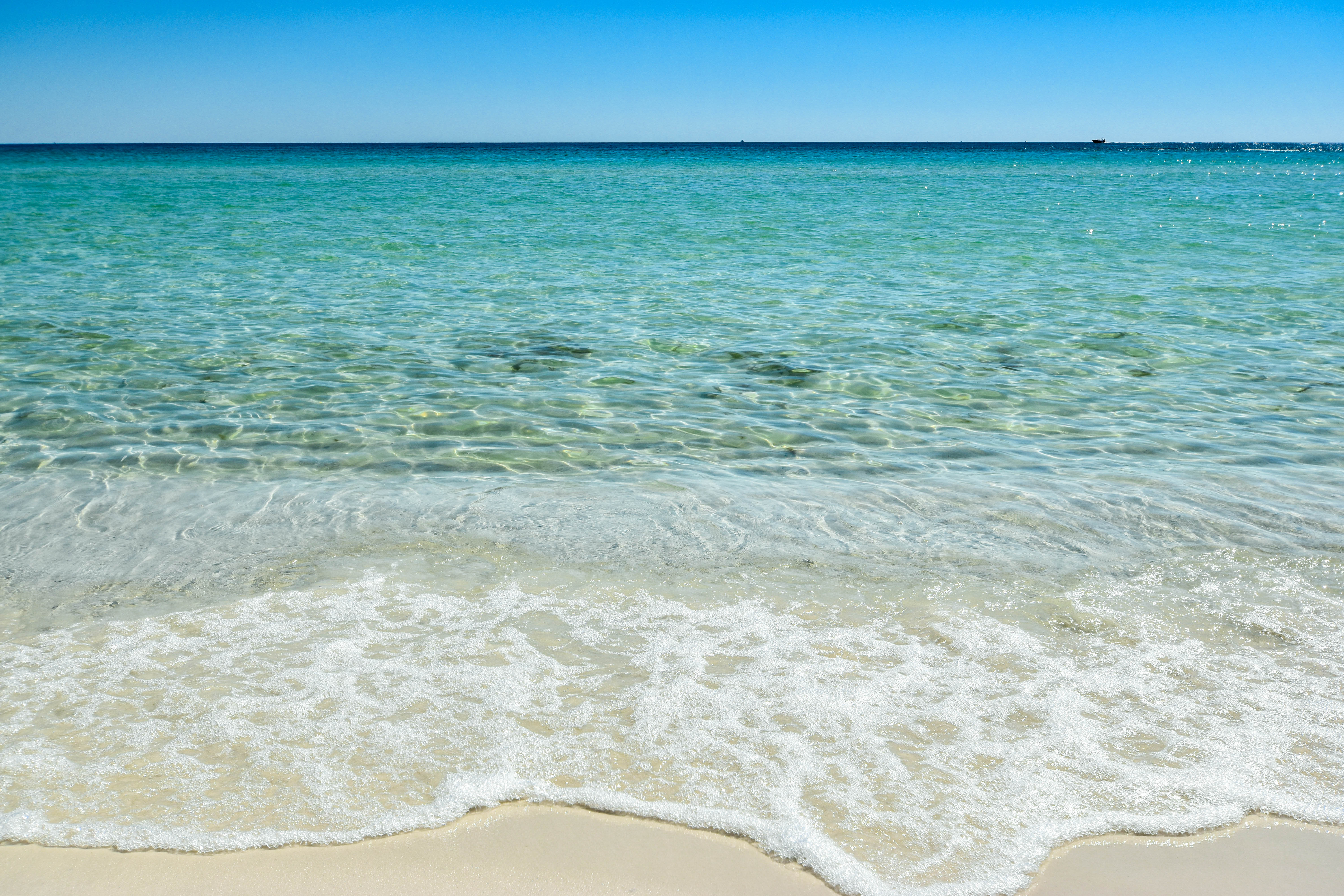
Beach safety is essential for protecting yourself and those around you. While not every beach in Okaloosa County has lifeguards on duty, all follow a flag warning system designed to keep visitors informed about current water conditions. These flags aren’t just for show—they serve as critical safety alerts that everyone enjoying the shore should understand. Public beach access points display signs explaining what each flag color means and rip current information, and for even more convenience, you can check real-time flag updates right from your phone.
Green Flag
Green flags are the best! When you see a green flag flying, it means the waters are calm, and hazards are minimal—perfect conditions for a relaxing day at the beach. These are the days when you can truly unwind, soak up the sunshine, and enjoy the gentle waves with peace of mind. Whether you're swimming, paddleboarding, or simply wading in the water, green flag days offer the safest and most enjoyable beach experience. But remember, even on the calmest days, it’s always important to stay aware of your surroundings and practice good water safety!
Yellow Flag
Yellow flags indicate medium hazards, meaning you should exercise extra caution while enjoying the water. These conditions can include light to moderate surf, stronger currents, or an increased risk of rip currents. While the beach is still open for fun, it’s important to stay alert, be mindful of your surroundings, and take extra precautions when swimming. Even experienced swimmers should be cautious, as changing tides and shifting currents can create unexpected challenges. If you see a yellow flag, it’s a reminder to stay vigilant, keep a close eye on children and weaker swimmers, and always respect the power of the gulf.
Red Flag
A great way to remember red flag warnings is the saying, "Knee deep is too deep." When a red flag is flying, it signals dangerous beach conditions, including powerful surf and even stronger currents that can quickly pull swimmers out to sea. The waves may look inviting, but the risk of being caught in a strong current or rough surf is significantly higher. Even the most experienced swimmers can struggle in these conditions. Venturing into the water not only puts your own life at risk but also endangers the brave rescuers who may have to come to your aid.
Double Red Flag
The beach is open, but the water is CLOSED. Entering the water during double red flags can result in criminal charges and up to a $500 fine from Okaloosa County.
Purple Flag
Caution: Marine pests have been spotted! And no, we’re not talking about the playful dolphins sneaking bait from fishermen—we mean jellyfish, stingrays, and other potentially harmful sea creatures. While the ocean is full of incredible wildlife, some encounters can lead to painful stings or injuries. Stay aware, shuffle your feet in the sand to avoid stingrays, and be cautious while swimming to steer clear of jellyfish. A little awareness goes a long way in ensuring a safe and enjoyable beach day! These flags, when present, are spotted along with a green, yellow, or red flag.
Rip Currents
A rip current is a powerful, fast-moving channel of water that flows away from the shore, often appearing as a calm, smooth gap between breaking waves. These currents can be extremely dangerous, pulling even the strongest swimmers out to sea in seconds. If you find yourself caught in a rip current, don’t panic and don’t fight against it—swimming directly back to shore will only exhaust you. Instead, float or tread water if necessary, then swim parallel to the shoreline to escape the current’s pull. Once you’re free, turn toward the shore and swim back at an angle. If you can’t make it back on your own, wave and call for help. Staying calm and knowing how to respond can save your life!
No matter what flag is flying—or even if no flag is posted—water conditions can change rapidly, and safety is never guaranteed. The gulf is unpredictable, with hidden currents, shifting tides, and marine life that can pose unexpected dangers. Always swim with caution, stay aware of your surroundings, and remember that you are entering the water at your own risk. Your safety starts with smart decision-making!






